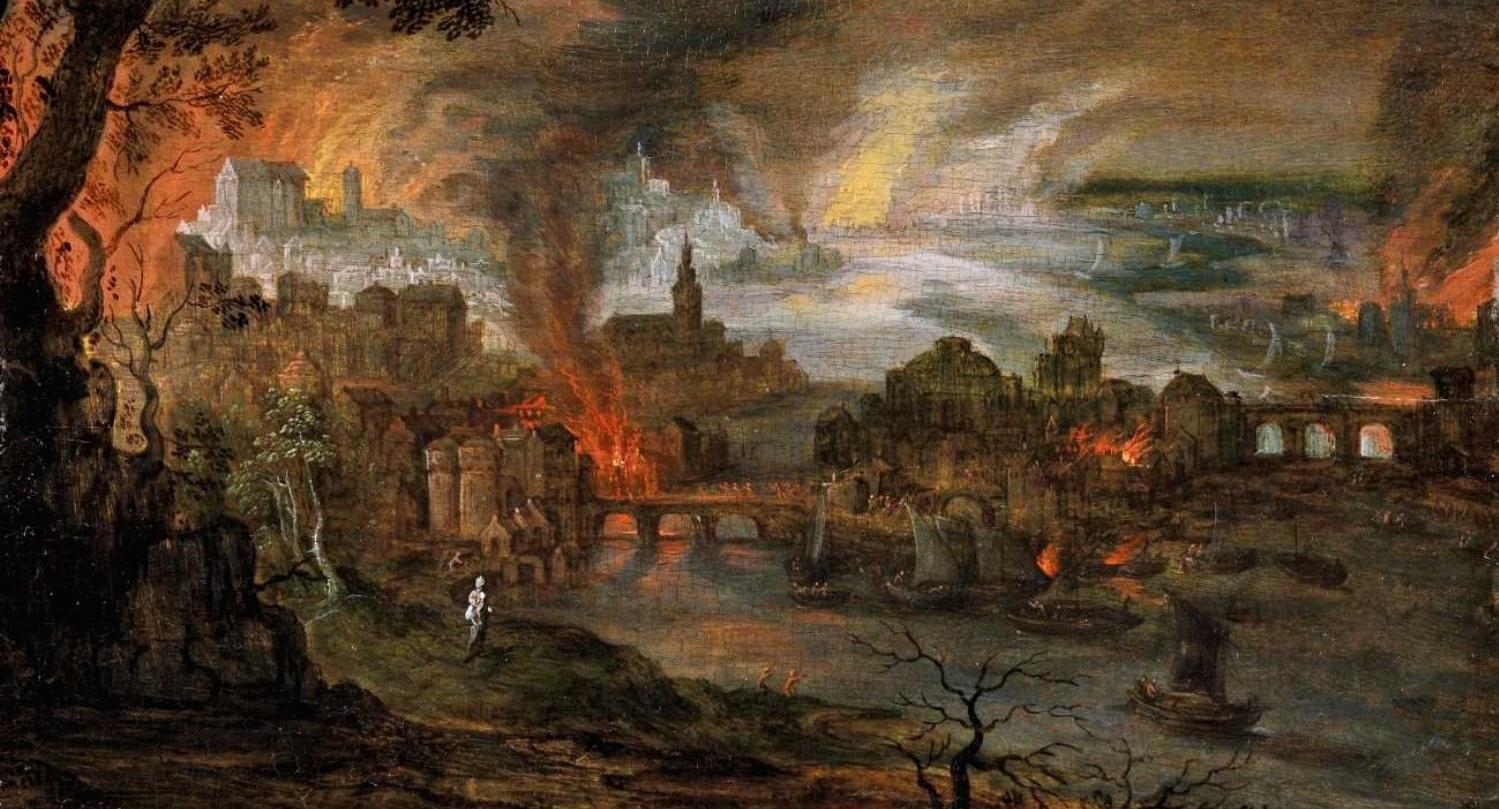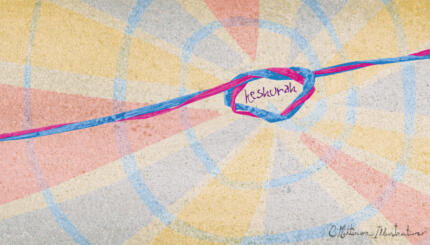Commentary on Parashat Ha'Azinu, Deuteronomy 32:1-52
Parashat Ha’Azinu troubles us with its extreme, opposing images of deity. Paradoxically, God is envisioned as comforting and frightening: the eternal guardian of Israel who eventually will redeem the people, and the jealous and judgmental deity who threatens to wreak vengeance on those who violate the covenant and turn to other gods. As Moses maintains, God is the giver of life and death, who heals as well as wounds (Deuteronomy 32:39- 40).
Thus, in his song to the Israelites contained in this Torah portion, Moses includes both a solemn warning that their lives as individuals and a people rest on their observing “faithfully all of the terms of this Teaching” (Deut. 46) and a final message of hope that God will one day deliver them from their enemies and they will ” long endure on the land” given to them by God (Deut. 47).
As a contemporary reader I am prompted to ask numerous questions. For instance, why in imagining God as comforter, does Moses use the image of an unmoving, unchanging rock (Deut. 32:4, [5, 18, 30, 31)? Commentators view the metaphor of the rock as a vehicle for communicating the message that God’s righteousness and loyalty to Israel never waver, or for highlighting the superior, incomparable nature of Israel’s God. However, in spite of how the metaphor is used in the context of the Song, one could just as easily argue that this metaphor imagines God as a cold, unfeeling natural object, incapable of entering into a relationship with anyone or anything.
Moreover, why does Moses describe God anthropomorphically as a warrior whose “flashing blade I And…hand lays holds on judgment” (v, 41)? Where is God’s compassion for God’s people and for their enemies (who, after all, are also God’s creations)? Is it not possible to influence and protect one’s people without ruthless killing or threats of killing? Is the price of our deliverance the death of others?
With your help, My Jewish Learning can provide endless opportunities for learning, connection and discovery.
Re-Imagining Our Relationship
Several feminists suggest that we respond to these questions by re-imagining our relationship with God. For example, in the place of God as rock or warrior, one might reclaim God as a parent who holds us in his or her arms, cares for us, and feels our pain. Some metaphors in the Song suggest such a perception, as when Moses speaks of God as a nursing mother (v, 13) who went through labor to bring forth Israel [v. 18; see also the indirectly maternal metaphor in Numbers 11:12).
Jewish medieval mystics envisioned God as Shechinah, God’s feminine presence who went into exile with the Jewish people, weeping with them and sheltering them in her wings. More recently, this image has been invoked by some Jewish feminists. Identifying Shechinah as “She Who Dwells Within,” Rabbi Lynn Gottlieb envisions God as a Being who connects all of life, expresses our longing for wholeness, and like the God of Deuteronomy, ultimately calls us to justice (She Who Dwells Within: A Feminist Vision of a Renewed Judaism, 1995, pp. 25-48).
Some contemporary theologians have insisted that non-anthropomorphic images of God can also be images of intimacy, love, and creation. Marcia Falk, for example, draws on biblical phrases or concepts to “serve as fresh metaphors for Divinity.” She has created new images drawn from traditional Jewish sources and composed of the basic elements of Creation (earth, water, wind, and fire), such as ein hachayim, “wellspring or source of life,” nishmat kol chai,” breath of all living things,” and nitzotzot hallefesh, “sparks of the inner, unseen self.” Through these images, she hopes “to help construct a theology of immanence that will both affirm the sanctity of the world and shatter the idolatrous reign of the lord/God/king” (“Toward a Feminist Jewish Reconstruction of Monotheism,” 1989, pp. 53, 56).
Judith Plaskow pursues a different path. While writing frequently about the importance of new, anthropomorphic images of deity, she maintains that “the traditional image of God as place (makom) evokes both the presence of the world in God and the extraordinary presence of God in particular places.” She continues, “Lacking personal communal images to refer to God, we use this richly ambiguous term to point to community as a special place of God’s self manifestation” (Standing Again at Sinai,1990, p. 65).
Viewed within its historical context, the God imagery of Parashat Ha’Azinu is understandable, even justifiable. But its problematic vision for our time encourages us to create new images of the Deity that make the poem’s underlying messages concerning the nature of God and the relationship between God and the Jewish people more compelling. This leads us to ask: What can we derive from Parshat Ha’Azinu? How else does it speak to us today? How can these images lead us to greater responsibility?
Sodom & Gomorrah
One clue may lie in the mention of Sodom and Gomorrah in Deuteronomy 32. As part of the announcement of the punishment in store for Israel’s enemies, this verse states: “Ah! The vine for them is from Sodom, / From the vineyards of Gomorrah.” Through the metaphors in this verse, the Song maligns the nations as corrupt and foreshadows their fate. This calls to mind when God threatens to destroy those cities, prompting Abraham to protest: “Must not the Judge of all the earth do justly?” (Genesis 18:25). Perhaps Parashat Ha’Azinu can be seen as an invitation for us to act like Abraham and protest against what seems to be an indiscriminate, wholesale destruction.
It is an opportunity to raise questions such as: Where is Your compassion, God, not only toward us but toward all of Your creation? Why frighten us with your threats? Will such threats make us abandon other deities or, just as likely, will they lead us to reject You? Such questions express what it means to be covenantal partners, willing to challenge God. Thus, beyond protesting against what we now deem unacceptable, this portion can prompt us to examine who we mean by God. It also can remind us of what is required in order to create a just society and uphold a covenantal relationship.
Reprinted with permission from The Torah: A Women’s Commentary, edited by Tamara Cohn Eskenazi and Andrea L. Weiss (New York: URJ Press and Women of Reform Judaism, 2008).
Torah
Pronunced: TORE-uh, Origin: Hebrew, the Five Books of Moses.



